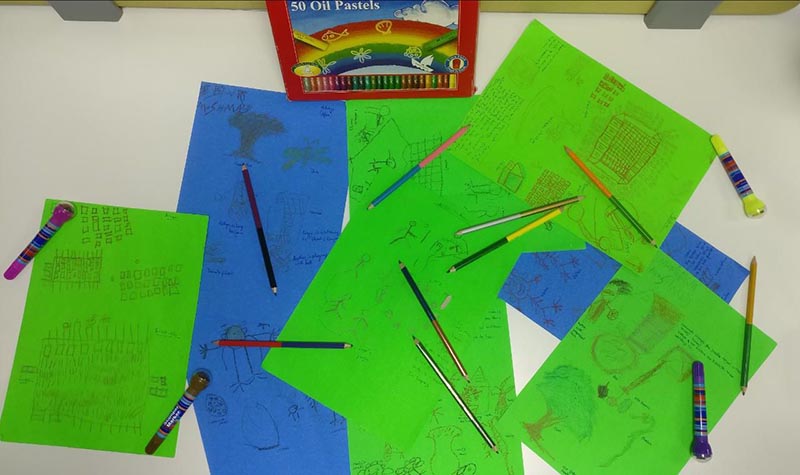From nightmares to dreams - rescued Indian children sketch life in slavery
CHENNAI: Menacing dogs, violent bosses and a house left empty because its inhabitants are always working - these are the grim images of family life created by Indian children raised in bonded labour.
A series of drawings by children rescued from forced labour in brick kilns, rice mills and wood cutting units has given social workers a unique insight into the intensity and extent of trauma they experience.
As the government intensifies its efforts to account for child labour, campaigners say it is becoming increasingly important to document their experiences.
"Their pictures capture details that even their parents don't mention to officials during their rescue," Loretta Jhona, a social worker with the anti-trafficking charity International Justice Mission, told the Thomson Reuters Foundation.
"A little boy drew an empty house and then told us that nobody ever lived in it because they were all working round the clock. He had noticed the relentless cycle of work."
India banned bonded labour in 1976. But the stark drawings reflect the reality of millions from marginalised communities still trapped in a cycle of debt bondage - the most prevalent form of slavery in India.
Poverty and unemployment force men and women to take loans from moneylenders or employers. They then spend the next six months or more working to pay the debts back.
In many cases, their young children accompany them and work to help pay back the debt.
"During rescues, children first tell you they don't work in the kilns or mills," said Jai Singh of Volunteers for Social Justice, a rights group that works in the brick kilns of northern Punjab state.
"But when you ask them to show you what they do all day, they promptly go and start patting clay or turning bricks kept to dry. Nobody calls it work, but they are toiling."
India has at least 100,000 working brick kilns in employing about 23 million workers, a 2017 report by rights groups Anti-Slavery International and Volunteers for Social Justice found.
One third of those living at the kilns are children, it stated.
DESPAIR TO HOPE
Teacher Rajnikant Biswal is often asked to join teams on missions to rescue bonded labourers in the southern state of Tamil Nadu.
The first thing he does is to set up a hat-making corner while the raids are conducted.
"I do it for the children trapped with their parents," Biswal told the Thomson Reuters Foundation in a phone interview.
"I give them a hat, do a little song and dance routine and then initiate a conversation. They hesitate but slowly tell me about their life and it is always heartbreaking."
In her first drawing after she was rescued in 2014, an eight-year-old girl drew her pet duck, taken away as punishment by her parents' boss.
One boy drew big dogs that would be unleashed on his family if they didn't work, capturing the fear and violence that become part of their life, counsellors said.
As time passes though, the images become more positive.
A teenager rescued from a rice mill with his family drew the helicopter he hopes to one day buy for his parents and a modest house with a car parked outside.
These pictures are more colourful - bright skies, birds, flowers in bloom and a house full of people watching television.
"When they draw life outside the mill, there is a burst of colours," said Jhona, adding that children often find it easier than their parents to imagine a better life.
Adults need more psychological help to become truly free as they are often too scared to admit to abuse for fear of retribution from their former owners, counsellors say.
While survivors of sex trafficking often receive help in shelter homes, rescued bonded labourers simply return to their villages and completely shut down.
"But children are always hopeful," Biswal said.
"It takes a while, but they eventually share their dreams and they are beautiful."






